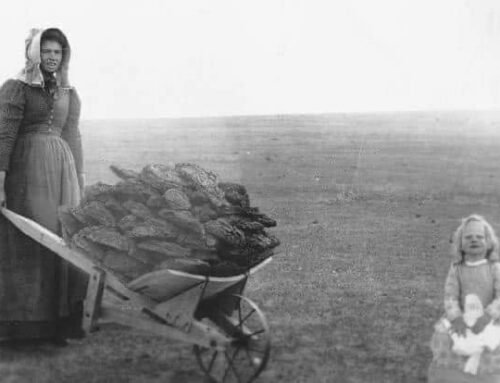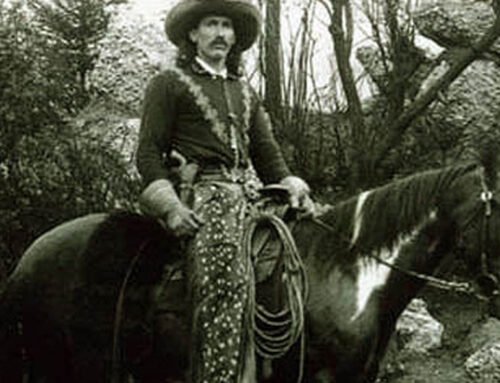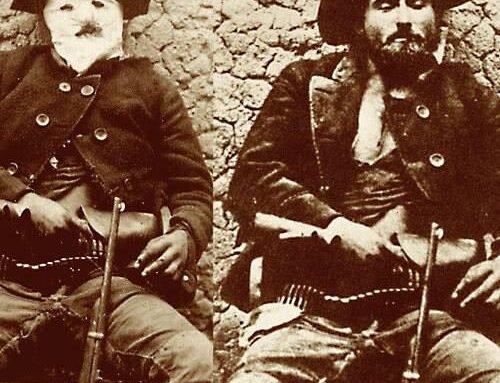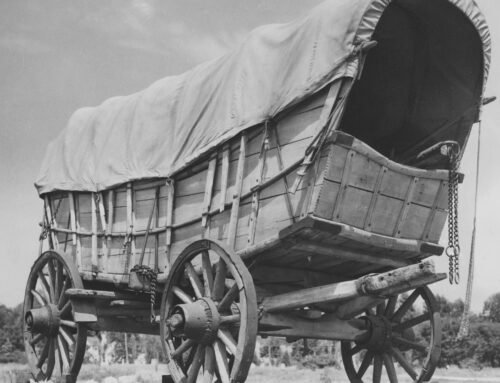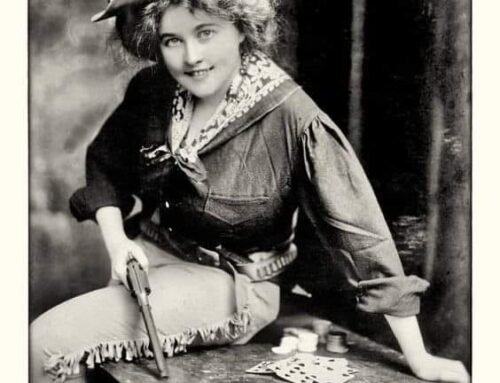Calamity Jane
By western author Nick Brumby
 “I figure if a girl wants to be a legend, she should go ahead and be one.” Marthy ‘Calamity Jane’ Canary.
“I figure if a girl wants to be a legend, she should go ahead and be one.” Marthy ‘Calamity Jane’ Canary.
Better known as ‘Calamity Jane’, the legendary Martha Jane Canary knew fame as a sharp-shooting, tobacco-spitting, whisky-guzzling and foul-mouthed reprobate who regularly wore men’s clothes and engaged in fearsome gunfights across the Old West.
However, other reports about Calamity Jane show a woman who was never extremely violent, could also be kind and charitable, tended to the sick, and cared about her daughters, before dying impoverished and ravaged by alcoholism.
As is usually the case, the truth is somewhere in between. Born in Princeton, Missouri on May 1, 1852, she would “grow up to look and act like a man, shoot like a cowboy, drink like a fish, and exaggerate the tales of her life to any and all who would listen”.
After being orphaned at the age of 12 after her family migrated from Missouri to Montana, the young Jane took whatever jobs she could find to provide for her large family. She worked as a dishwasher, cook, waitress, dance hall girl, nurse, and ox team driver. Finally, in 1874, she claimed she found work as a scout at Fort Russell. Jane was involved in several campaigns in the long-running military conflicts with Native Americans.
 Jane later headed to Fort Laramie where she met Wild Bill Hickok who was traveling with Charlie Utter’s wagon train to Deadwood, South Dakota. The two hit it off immediately, as both were outrageous exaggerators and heavy drinkers,
Jane later headed to Fort Laramie where she met Wild Bill Hickok who was traveling with Charlie Utter’s wagon train to Deadwood, South Dakota. The two hit it off immediately, as both were outrageous exaggerators and heavy drinkers,
Although Jane and Hickok have often been said to have been romantically involved, there is little to support these stories. Jane joined the train which arrived in Deadwood in June of 1876.
She subsequently worked as a Pony Express rider carrying the U.S. mail between Deadwood and Custer, a distance of 50 miles, over one of the roughest trails in the Black Hills country. She remained around Deadwood all that summer visiting the many camps of the area.
Calamity Jane grew to be loved by the people of Deadwood. In 1895, she returned to town after an absence of 16 years. Here’s how the Black Hills Daily Times reported it:
“She has always been known for her friendliness, generosity and happy cordial manner. It didn’t matter to her whether a person was rich or poor, white or black, or what their circumstances were, Calamity Jane was just the same to all. Her purse was always open to help a hungry fellow, and she was one of the first to proffer her help in cases of sickness, accidents or any distress.”
But after some townsfolk were outraged at such compliments, the paper changed its tune, and a month later “atoned for its indiscretion by referring to Calamity as ‘a notorious ruin.’”
 A biographer said:
A biographer said:
“Her spasmodic generosity; her brusque, rough sympathy for the underdog; her failure to be impressed with riches, fine clothes or ‘society’; her lack of pretense or affectation of virtue; her complete rejection of simpering femininity, such attributes were esteemed on the frontier. She was a symbol of rough virtue—hardiness with a heart of gold and a lively sense of humor. Few who were anywhere near the scene of her activities were in the least deceived about her status as a kind of eccentric prostitute. Nowhere in the record is there approval of her aberrations but there is much support for the view that her virtues outweighed her vices.”
There are many stories of how she got the name Calamity Jane. An early one has her telling Jesse James it came because bad luck seemed to follow “Pretty Jane.” But in her autobiography, she claimed she got it in the Indian Wars when she saved a captain during an ambush.
 Far more likely is that it ‘just happened’. “Jane” was a common name for any woman in the West—it was the name Lewis and Clark called Sacagawea—and her life was a calamity, compared to the life women were expected to pursue.
Far more likely is that it ‘just happened’. “Jane” was a common name for any woman in the West—it was the name Lewis and Clark called Sacagawea—and her life was a calamity, compared to the life women were expected to pursue.
The name certainly fit perfectly into the fanciful dime novels that started appearing about her life in 1877. She was the heroine in perhaps 10 different novels by writer Edward L. Wheeler. Wheeler had never met her, and most of his information was secondhand or fabricated. Nevertheless, his stories shone a new spotlight on Calamity Jane. He gave her a stage to tell her own tall tales of the Wild West. She published her autobiography in 1896 and presented it as a truthful telling of her life, but much of it has been disproven. During her lifetime, however, it solidified her as a star of the Wild West.

Riding the wave of celebrity she gained from these novels, Calamity Jane traveled the country as a performer. When she was out of work, she would sell pictures of herself to fans or copies of her biography. She joined up with Wild West shows, where she was a crowd pleaser. There is debate about if she actually joined with Buffalo Bill’s show in particular, however. Her show runs were short-lived, as she would drink all of her pay in short order and be kicked out for being too rowdy.
In 1903 she returned to the Black Hills with nothing but a ragged suitcase and raging alcoholism. She spent a couple months in Belle Fourche cooking and doing laundry at Madam Dora DuFran’s brothel. By summer, she was dying from alcoholism, and on August 2 was found in a room at the Calloway Hotel.
Calamity Jane is buried near Wild Bill in the Deadwood Cemetery. They are together in death, even if they were never really together in life.
Even this last act in her story is shrouded in uncertainty. Some say it happened as a joke on Wild Bill. In life he had reportedly found her a bit annoying, and his friends supposedly thought it could be fun for her to annoy him in the afterlife as well.
And to this day, when anyone wants to represent the blunt grit of a woman of the West, Calamity Jane—real or imagined—comes immediately to mind.
Lord knows she lived a life and became a legend. Few who met her ever forgot her. As she was fond of saying:
“The bigger a man’s gun, the smaller his doodlewick.”

About Nick Brumby
I like a good story. And of all stories, I love westerns the most.
As a kid, I spent far too many afternoons re-watching Clint Eastwood spaghetti westerns, picking up ‘Shane’ for just one more read, or saddling up beside Ben Cartwright when ‘Bonanza’ was on TV each afternoon.
I’m a former journalist and I love horses, dogs, and the occasional bourbon whiskey. I live with my wife, daughter and our ever-slumbering hound in a 1800’s-era gold mining town – our house is right on top of the last working gold mine in the area. There may not be much gold left, but there’s history wherever you look.
I hope you enjoy my westerns as much as I do writing them!
Happy trails,
Nick






















